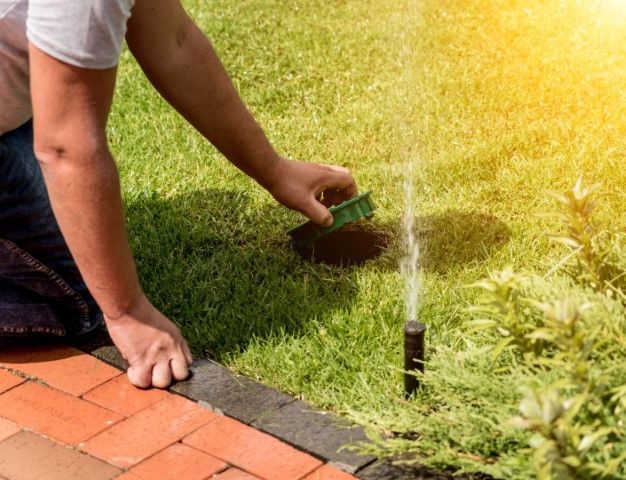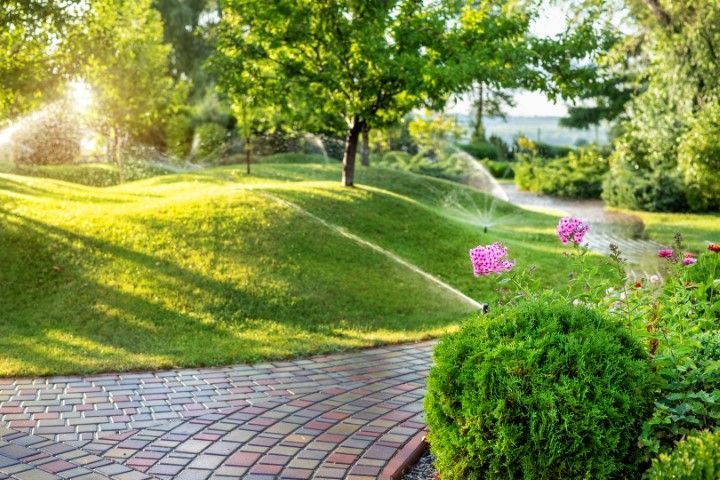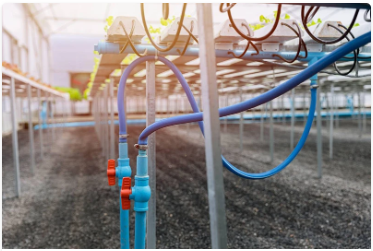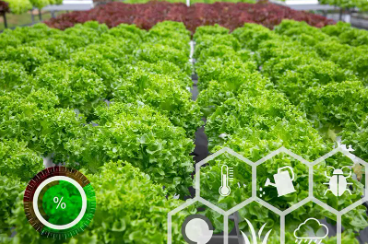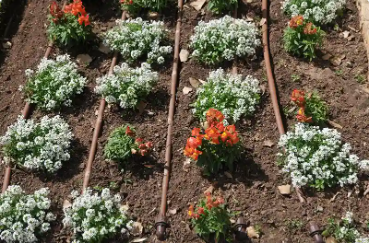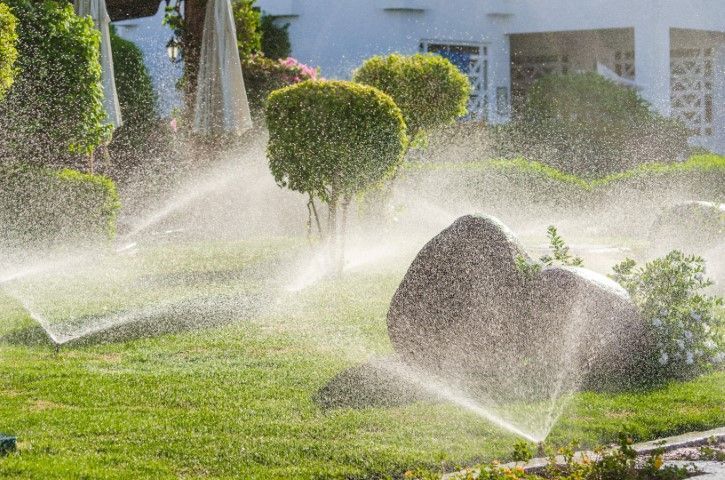Cost-Effective Irrigation Solutions for Small Gardens - SPRINKLER SYSTEMS OF SANANTONIO
Cost-Effective Irrigation Solutions for Small Gardens
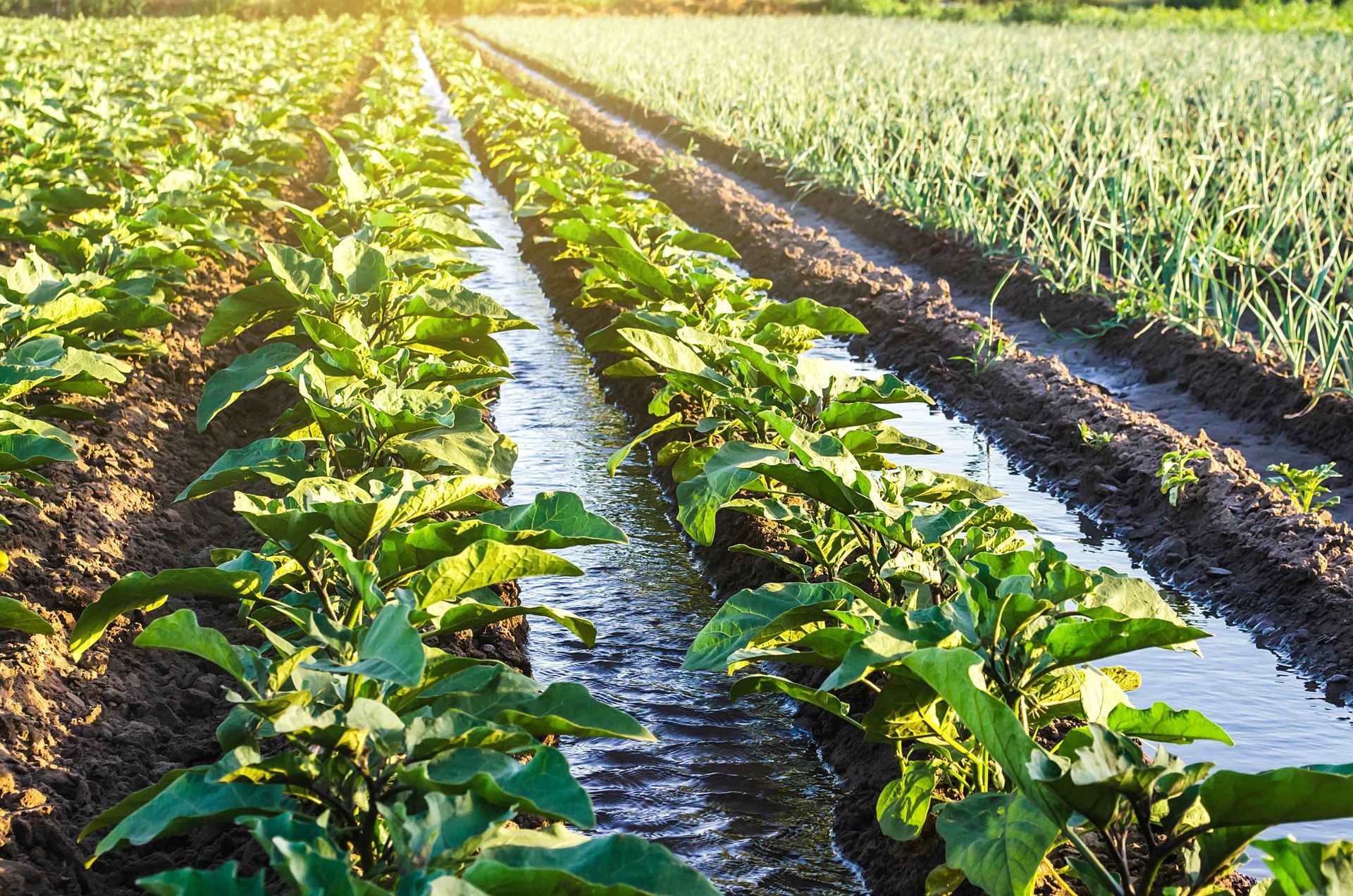
For small gardens, cost-effective irrigation solutions like DIY drip systems and soaker hoses can significantly enhance water efficiency. DIY drip systems achieve up to 90% water use efficiency and require regulated pressure for optimal performance, while soaker hoses reduce water usage by 70%, targeting plant root zones effectively. Rainwater harvesting further cuts dependence on municipal water by up to 40% through the use of rain barrels and proper filtration. Enhancing this setup with smart timers automates watering and minimizes waste, and integrating mulching techniques can conserve soil moisture by up to 70%. Explore further for detailed implementation strategies.
DIY Drip Systems
DIY drip systems provide an efficient and cost-effective solution for irrigating small gardens. These systems utilize drip emitters to deliver water directly to the base of plants, ensuring minimal evaporation and runoff. By focusing water delivery, DIY drip systems can achieve up to 90% water use efficiency, significantly higher than traditional sprinkler systems, which average around 65% efficiency.
One critical aspect of a successful DIY drip system is pressure regulation. Consistent water pressure is essential to ensure that drip emitters function correctly, delivering uniform water output across the entire garden. Pressure regulators, typically set to maintain water pressure between 10 and 30 psi, are integrated into the system to mitigate fluctuations and prevent damage to the emitters.
Installation involves laying out a network of tubing, often made from durable polyethylene, and attaching drip emitters at precise intervals. Emitters come in various flow rates, commonly ranging from 0.5 to 2 gallons per hour, allowing gardeners to customize water delivery based on plant requirements. Incorporating a pressure regulator in the mainline ensures consistent performance and longevity of the system.
Soaker Hoses
Soaker hoses present a straightforward and effective method for irrigating small gardens, particularly for those seeking to optimize water conservation. These hoses are designed to release water slowly and evenly along their length, directly targeting the root zones of plants. This targeted irrigation method minimizes water loss due to evaporation and runoff, offering significant efficiency. Soaker hose benefits include reduced water usage by up to 70% compared to traditional sprinklers, making them an environmentally friendly option.
The soaker hose installation process is relatively simple and can be completed with minimal tools and expertise. Begin by laying out the hose in a serpentine pattern around the garden, ensuring it is in close proximity to the plants’ root zones. To prevent kinking and ensure uniform water distribution, secure the hose with garden staples. Attach the soaker hose to a water source, preferably equipped with a timer to regulate watering schedules. It is crucial to regularly inspect the hose for blockages or leaks to maintain optimal performance.
Rainwater Harvesting
Rainwater harvesting offers a sustainable and efficient approach to irrigation for small gardens, leveraging the natural precipitation cycle to reduce dependence on municipal water supplies. By capturing and storing rainwater, gardeners can mitigate water shortages and reduce utility costs. Rain barrel systems are a popular method for collecting this valuable resource. Positioned beneath downspouts, rain barrels can store between 50 and 100 gallons of water, which can be used during dry periods.
To ensure the water is suitable for irrigation, proper filtration methods must be employed. Mesh screens or first-flush diverters can prevent debris and contaminants from entering the storage system. For more refined filtration, activated carbon filters can be installed to remove finer particulates and pathogens, ensuring the water is safe for garden use.
Studies have shown that implementing rainwater harvesting can reduce household water consumption by up to 40%, providing a significant environmental and economic impact. Additionally, rainwater is naturally soft and free of chlorine, making it ideal for delicate plants. Integrating rain barrel systems with efficient filtration methods can thus provide a reliable, eco-friendly irrigation solution, optimizing water use and enhancing garden health.
Smart Timers
Smart timers, a key innovation in modern irrigation technology, offer precise control over garden watering schedules, optimizing water usage and enhancing plant health. Leveraging smart sensors and automated irrigation systems, these devices ensure that gardens receive the right amount of water at the right time, reducing waste and promoting efficient resource use.
**Key features of smart timers include:**
– **Automated Scheduling**: Pre-program watering times to suit specific plant needs, reducing manual intervention.
– **Smart Sensors Integration**: Monitor soil moisture and weather conditions to adjust watering schedules dynamically.
– **Water Conservation**: Optimize water usage by preventing over-watering, which is crucial for sustainability.
– **Remote Control**: Manage irrigation systems via mobile apps, providing flexibility for garden maintenance.
– **Customizable Zones**: Tailor watering schedules for different garden areas, accommodating diverse plant requirements.
Data from recent studies indicate that using smart timers can reduce water consumption by up to 30%, making them a cost-effective solution for small gardens. These systems address common irrigation challenges such as over-watering and inefficient water use, ensuring that plants thrive while conserving resources. By integrating smart sensors and automated irrigation, gardeners can achieve a balanced, healthy garden environment without the excessive use of water, ultimately contributing to environmental sustainability.
Mulching Techniques
Utilizing effective mulching techniques can significantly enhance the health and productivity of small gardens by improving soil moisture retention, regulating temperature, and suppressing weed growth. Organic materials such as straw, grass clippings, and compost can serve as highly effective mulch. Research indicates that organic mulch can reduce soil evaporation by up to 70%, thereby conserving water and enhancing moisture retention. This is particularly beneficial in regions with limited water availability or during dry seasons.
The temperature regulation provided by mulch is another critical advantage. Studies show that mulched soils exhibit temperature fluctuations of only 5-10 degrees Fahrenheit compared to bare soil, which can vary by up to 40 degrees. This consistency promotes root health and plant growth. Additionally, mulching effectively suppresses weed growth by blocking sunlight, thus reducing the need for chemical herbicides.
A data-driven approach to mulching involves applying a layer of 2-4 inches of organic materials to achieve optimal results. This thickness ensures adequate moisture retention while preventing fungal growth. Regularly replenishing the mulch layer maintains its efficacy over time. Therefore, integrating mulching techniques into small garden irrigation plans is a cost-effective, sustainable strategy to maximize garden productivity.
- Avoid These 5 Common Irrigation Blunders Every Homeowner Makes
- Your Go-To Guide for Picking the Perfect Sprinkler System for a Lush Lawn: Handy Tips and Tricks
- Impact of Climate on Irrigation System Design and Operation
- The Role of Soil Moisture Sensors in Irrigation Efficiency
- Cost-Effective Irrigation Solutions for Small Gardens
